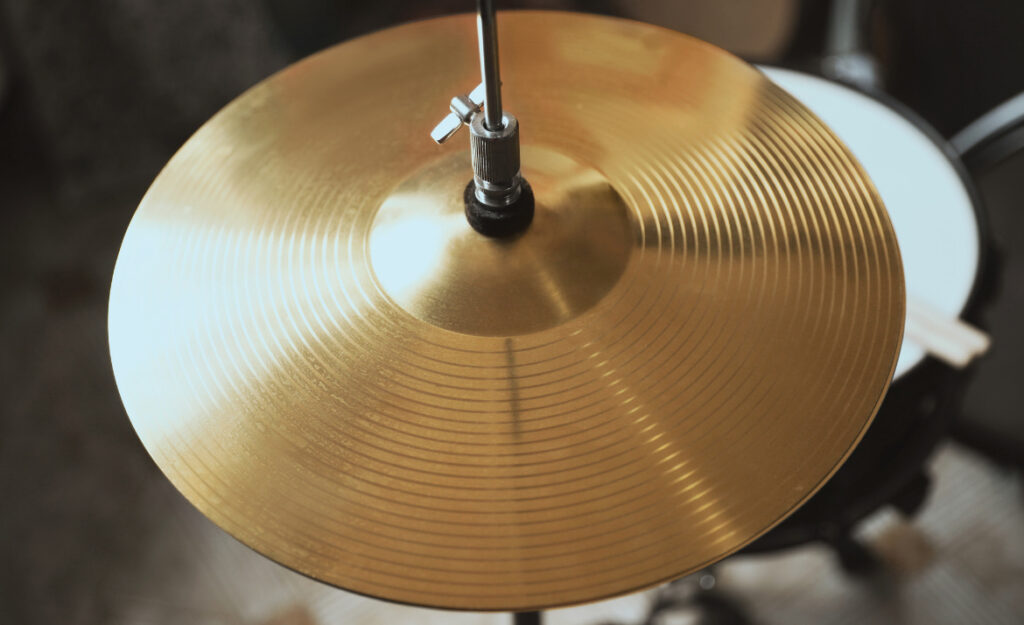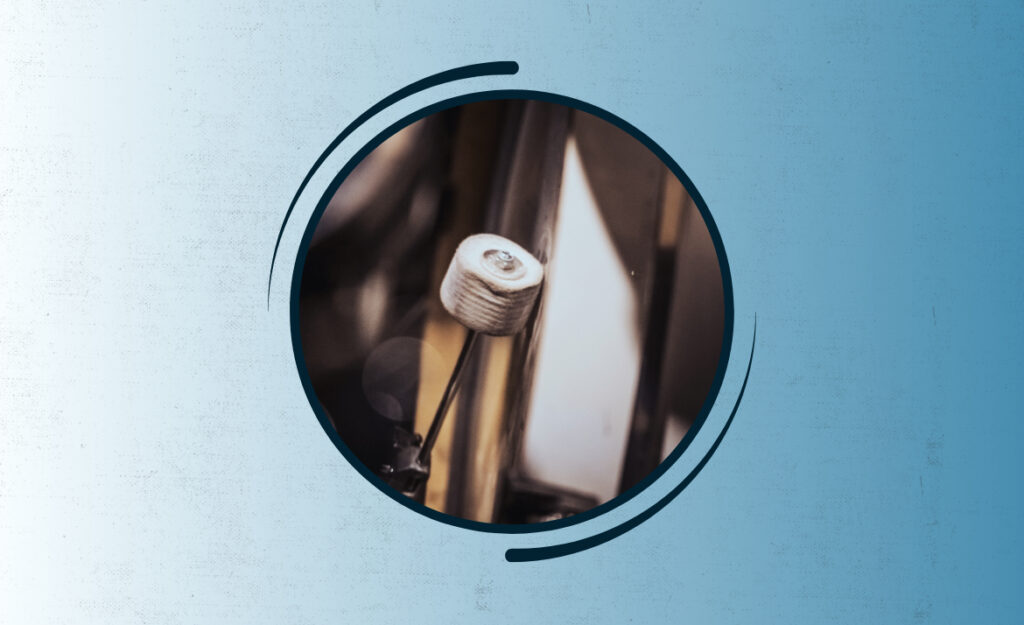Cymbals buzz with life, shimmering above every groove. For drummers on the move, the worry of dings and cracks is constant. The right cymbals cases can be the simple fix to that stress, making every gig or session a smoother experience.
Musicians invest in quality cymbals, treating them as the foundation of their sound. When those valuable pieces travel, damage can quickly turn an exciting show into a headache. Protection and peace-of-mind travel hand-in-hand for drummers everywhere.
If you care about avoiding cymbal damage and want simple habits to keep your gear safe, this guide offers practical tips. Dive in to learn what matters before you pack up for your next rehearsal or performance.

Choosing Cases That Match Your Cymbals’ Value From Day One
Drummers know their cymbals’ value, so matching that investment with strong cymbals cases is smart from the start. The cost of a good case saves years of worry and repairs.
A rubberized handle and reinforced sides do more than look professional; they mean less flex with every bump on those bumpy venue stairs, making setup less stressful for everyone.
Rigid Shells That Prevent Flex On The Move
Katie, a studio drummer, used to carry her ride in a drumstick bag’s compartment until she felt the edge bend on a subway trip. She switched to a rigid ABS hard case. Now, her cymbals stay perfectly round, no matter how chaotic the commute gets.
Rigid shells take the hit instead of your gear. If a case flexes in your hand, it’ll flex under pressure in a trunk. Drummers who lift with confidence check for minimal give before every gig.
“If my cymbals rattle, I want to know it’s from playing—not carrying,” Katie now says. That’s a script to remember at the store: “I want sturdy sides that don’t bend in the middle.”
Straps And Padding That Prevent Chafing And Cracks
Ben shows his bandmates to wrap cymbals separately before stacking in the case, so logos never rub off. Padded dividers mean even thin splashes return home unscathed.
If your case gives you the option, adjust interior dividers so each cymbal sits snug, not rattling. Straps help, but padding prevents cracks in transit, not after the accident.
For added assurance, lift the closed case and gently shake it. If you hear tapping, your padding needs adjustment. “Silent cases, happy rides,” as Ben sums it up to new drummers.
| Case Type | Main Protection | Recommended Scenario | Takeaway |
|---|---|---|---|
| Padded Soft Bag | Light foam, flexible | Local gigs, light travel | Best for gentle trips; not for touring vans |
| ABS Hard Case | Impact-resistant plastic, rigid design | Flying, van tours, major gigs | Use when expecting rough handling |
| Hybrid Case | Rigid inserts with padding | Regular car gigs, teaching | Best balance of lightness and protection |
| Rolling Cymbal Vault | Multi-cymbal compartment, wheels, strong shell | Sessions, air travel, full band tours | Roll for max protection; good for many cymbals |
| Backpack Soft Shell | Multiple layers, shoulder straps, lightweight | Subway or city gigs, rehearsals | Keeps hands free; pack light for best use |
Organized Packing Ensures Cymbals Stay Damage-Free
The way you pack cymbals makes as much difference as the case’s quality itself. Consistency and habit protect your gear whenever you pack up after a show or lesson.
Place the largest, heaviest cymbals at the bottom and use soft sleeves or dividers between each to prevent metal-to-metal contact. Each step removes a risk from your checklist.

Travel Care Tips for Drummers: Protect Your Drum Kit Everywhere
Drummers—keep your gear safe with road-tested travel care tips!Soft Sleeve Use For Each Cymbal Adds Insurance
Slip a cymbal into its own microfiber or flannel sleeve before it goes in the case. This action eliminates direct friction, preserving finish and preventing hairline cracks.
- Use thick, soft sleeves for expensive cymbals to prevent scratches, especially if gigging multiple nights per week.
- Separate sleeves are like socks for feet: skipping one means more wear and tear to fix later.
- Sleeves also keep fingerprints and dirt off, extending polishing intervals.
- Always check that each sleeve covers the entire cymbal edge, as exposed areas chip first.
- Pack extra sleeves for hops between studios or venues.
This packing ritual lets you stack and move cymbals knowing each piece is secure every time.
Staggered Stacking Keeps Edges Safe
Alternate the position of the bell with every cymbal when stacking. For example, the bell of the first faces up, the next faces down, and so on.
- Stack bells opposite to avoid pressure points that can lead to cracks.
- Never stack without alignment—offset bells stress the weakest part of the cymbal.
- Use case dividers to maintain this offset during travel.
- Check alignment after loading for longer trips to prevent sliding inside the case.
- Practice this before packed tours so setup is automatic, not rushed.
Carrying out this stacking rule ensures the fragile edges avoid the knocks that cause chips or distortion.
Smart Travel Habits Keep Gear Safe On Stage And On The Road
Developing routines for moving and placing cymbals cases is the backbone for reliable gigging. Each action before and after a set influences the lifespan of your equipment.
Watch for uneven sidewalks, abrupt taxi stops, and hidden obstacles backstage. Stopping for a quick case check saves both your cymbals and your timeline.
Carrying Cases The Right Way Every Time
Use both hands and keep the case vertical as you move. Swinging a case loosely leads to dings. If your case has backpack straps, snug them to prevent shifting.
Pretend you’re carrying a fragile cake through a crowded kitchen: steady, no sudden moves, and aim for a clear path. Teach this habit to younger drummers by example.
Announce “Coming through with cymbals!” before entering a busy loading area to avoid collisions. That heads-up script saves costly chip repairs and awkward apologies.
Where You Rest Your Case Matters
Avoid concrete and rough surfaces; set the case on carpet, risers, or atop your snare drum case in the green room. Elevating keeps dirt and liquid accidents at bay.
In crowded venues, place your case where it won’t become a footrest or trip hazard. Keep it visible and labeled with your contact info for quick recovery if misplaced.
Drummers who work club circuits say, “I park my case near my stool—never backstage near crates.” That keeps their cymbals cases ready and safe, without extra stress.
Repair And Cleaning Protect Longevity Between Trips
Proper cleaning routines after every gig ensure your cymbals—and the cases that protect them—stand up to the test of time. Residue, moisture, and grime can accelerate wear unexpectedly.
Create a micro-routine: wipe cymbals dry before packing, and inspect cases for loose threads, zippers, or padding shifts. Adopting this ritual is an easy upgrade to overall maintenance.
Dealing With Spills And Unexpected Messes
If a drink is spilled on your case, immediately wipe with an absorbent towel, then air-dry open. Leaving moisture invites rust and mold, which can transfer to your gear invisibly.
Use a mild soap and water to clean outer surfaces once a month. Remove and gently wash interior sleeves if they collect sweat or grime. Never use harsh chemicals or bleach.
Drummers say, “If my case smells fresh, I know I’m ready to play.” That mental connection builds positive habits for keeping gear truly ready for any session.
Patching Tears And Restoring Padding
Check case seams every few trips. Repair tiny tears with fabric glue or tape before they expand. Broken zippers should be fixed before the next gig to prevent rushed, unsafe packing.
Padding loses effectiveness with flat spots or clumping. Replace inserts when needed—a few dollars beats the price of cracked cymbals. Listen for new squeaks, which signal shifting padding inside.
Use a checklist: “Seams tight? Padding even? Zipper glides?” That self-audit keeps cases trustworthy each time you walk out the door.
The Small Details That Make Cases Travel-Ready Every Day
Seemingly minor upgrades transform ordinary cymbals cases into reliable travel companions. Gear that fits your habits turns every journey into a chance for smooth playing and storage.
Select cases with non-slip feet, lockable zippers, and ID tags. Drummers who travel with confidence know their cases are traceable and always upright, even backstage under pressure.
Adding Personal Touches For Faster Retrieval
Mark your case handle or patch with tape that stands out. In a sea of black cases, yours stays visible after long encores. “Find the blue handle,” your bandmates will say during breakdowns.
Attach a keychain or patch with your initials for speedy identification—especially important in festival backlines, where cases get mixed quickly.
Be ready with, “That’s my green zipper pull,” to avoid confusion as the van gets loaded after midnight sets in unfamiliar venues.
Weather-Proofing For Changing Conditions
If touring between climate zones, look for water-resistant exteriors. A sudden shower at load-out won’t sabotage your gear when the case is sealed tight and the zippers covered with flaps.
Keep silica gel packs inside to absorb humidity. This prevents musty odors and metallic tarnish—a small step that pays off during summer festivals or winter club runs.
Before placing cases in trunks, wipe away snow or rain. The tiniest puddle inside a trunk can seep in and threaten cymbals during long drives.
When To Upgrade: Signs Your Setup Needs More Protection
Pay attention to the noises and feedback your cymbals cases give you. A fresh crack or a muffled bell can be the subtle cue that your case is no longer doing its job.
Running a routine check every few months keeps you alert to growing problems. Swap cases when you see worn out padding, closing struggles, or dragging zippers.

Bands And Teachers: Keeping Everyone’s Cymbals Safe
School band directors and private drum tutors should inspect cases regularly. Group gear is at higher risk: one neglected case can mean repair costs for an entire section.
Teachers can hold case-check days, helping students spot weak handles, gaps, or thinned fabric. Sharing stories of “gear that nearly got away” drives home the value of constant vigilance.
Post a chart in the rehearsal space: “Case repaired? Zipper fixed? Padding OK?” This reinforces group habits and saves budgets down the road.
Doubling Up For Tours And Long Trips
Book twin-layer cases for cross-country or airline travel, especially for valuable sets of cymbals. Custom foam inserts add one more barrier against unpredictable drops and shifting cargo holds.
If you feel hesitant before a trip—“Should I trust this case one more run?”—it’s a clear sign to upgrade. Replace questionable gear before the next tour, not after an accident.
Buying a second case adds a backup plan that speeds up your pre-gig packing routine, making sure there’s always a safe spot for each cymbal.
Bringing It All Together: Safe Cymbals, Confident Drumming
Examining cymbals cases objectively reveals how small daily steps, from choosing sturdy gear to strategic packing and travel habits, make cymbal transport reliable and worry-free.
Each conscious habit—stacking with sleeves, repairing tiny rips early, claiming your space at the venue—confirms your commitment to your craft while saving money on repairs and replacements.
The right combination of case, packing ritual, and travel awareness ensures your cymbals are ready for each session, rehearsal, or surprise opportunity. That security lets you focus fully on the music, not the gear.



